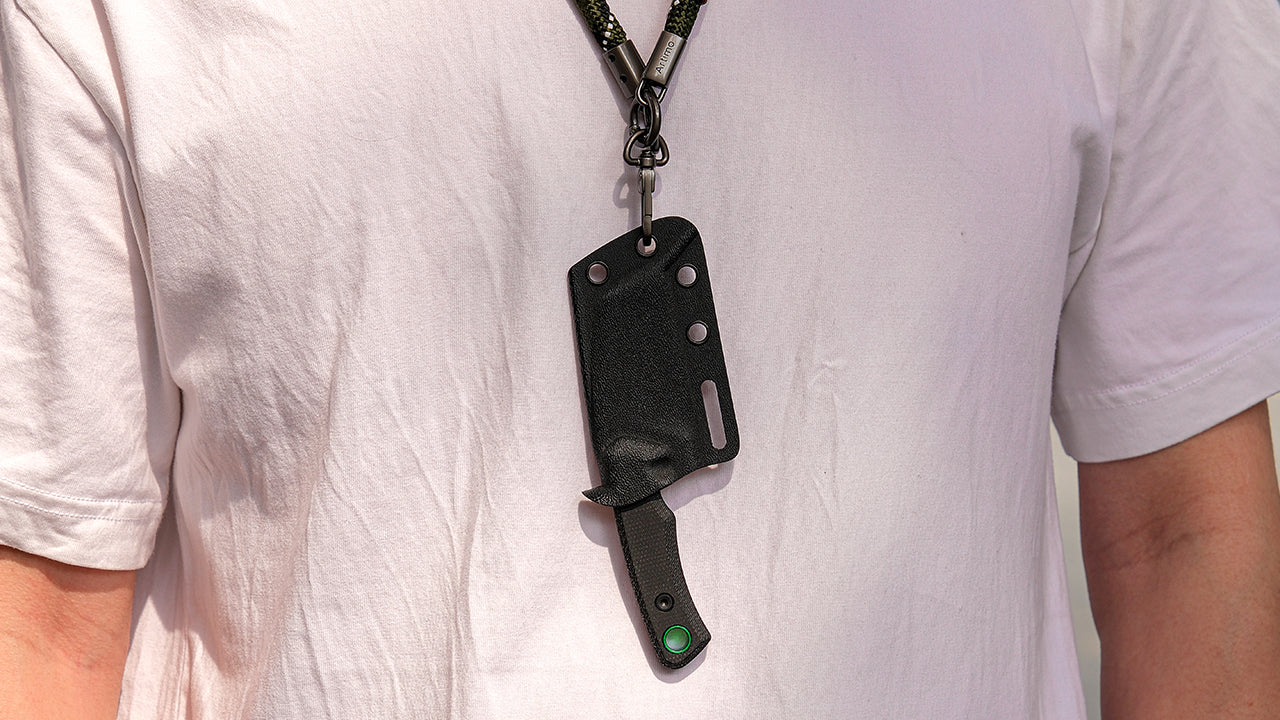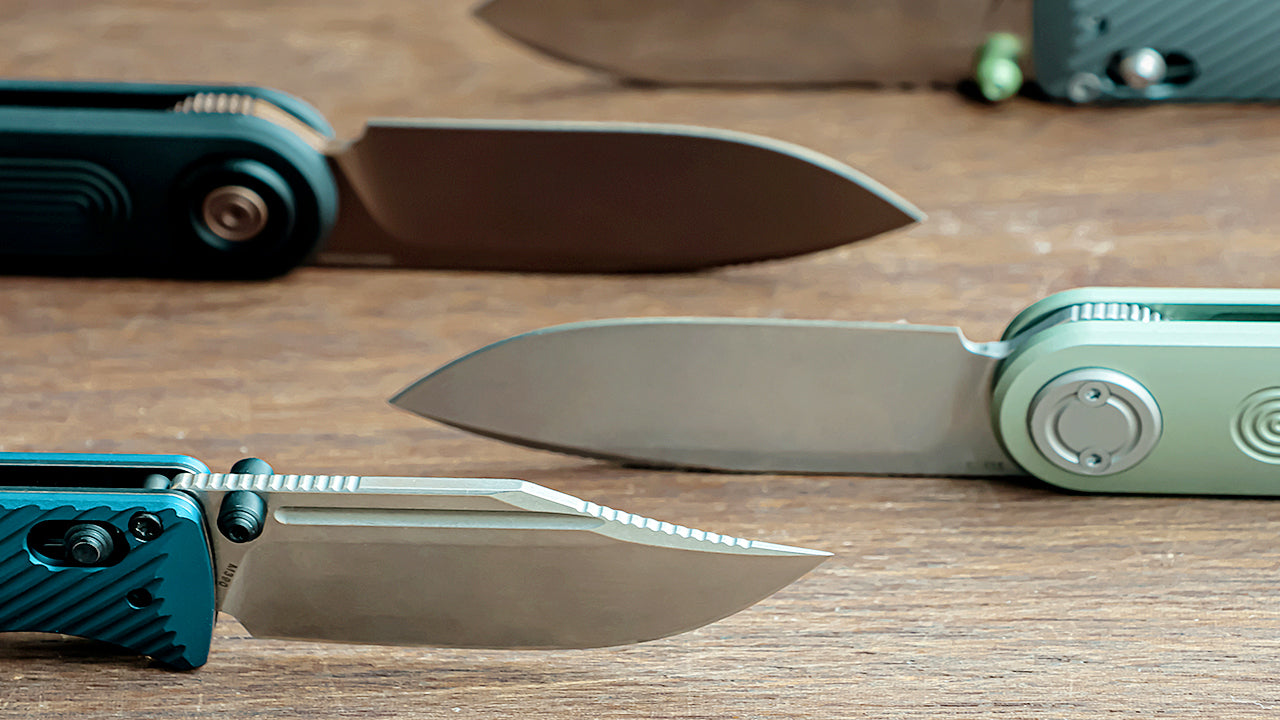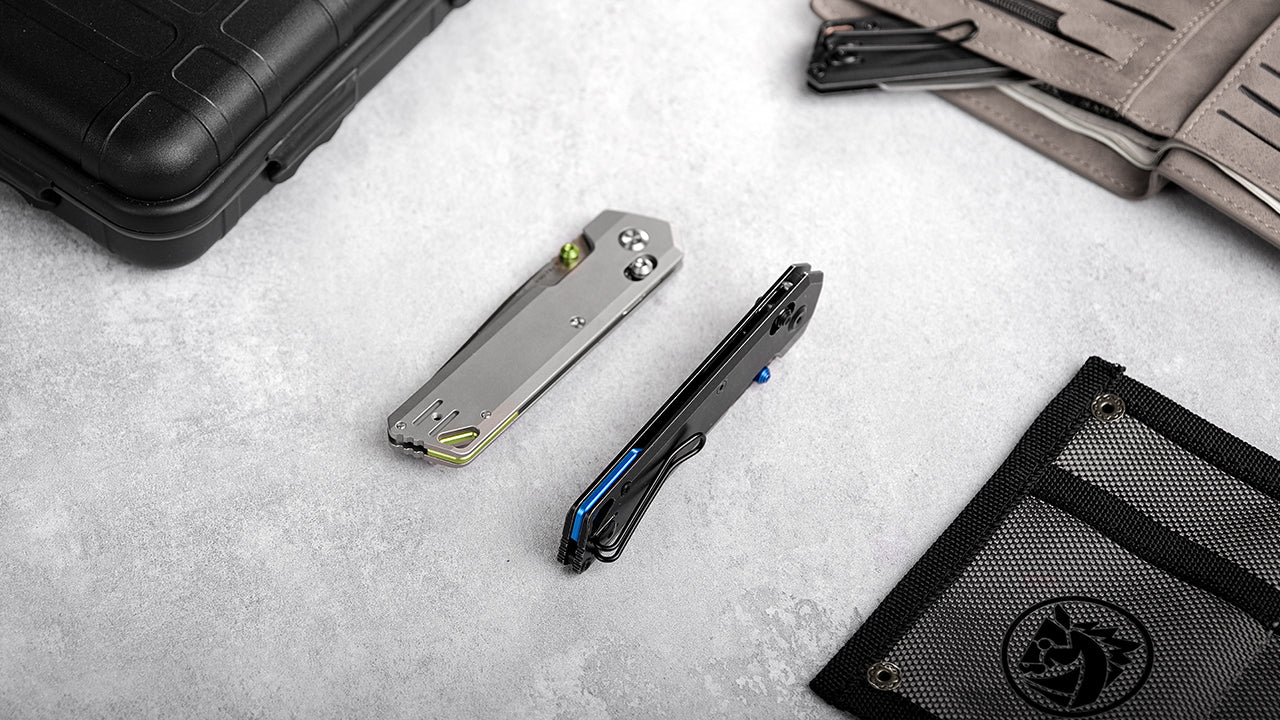In the world of everyday carry (EDC), few tools offer the same balance of accessibility, concealment, and real utility as a neck knife. These compact fixed-blade tools may not get as much attention as their larger, flashier counterparts, but they've quietly earned a permanent spot in the kits of professionals, outdoor enthusiasts, and prepared individuals. People who rely on their gear know this truth: the best knife is the one you actually have with you.
First, What Exactly Is a Neck Knife?
While “neck knife” can refer to any small blade worn around the neck, a true EDC neck knife—what some call a “micro tactical blade”—is specifically designed to meet the demands of real-world use. It’s not just a mini version of a big knife. It’s purpose-built to deliver maximum performance in the smallest form factor possible.
A well-made fixed-blade neck knife typically features:
- Compact size – usually under 3 inches in blade length, around 6 inches overall.
- Lightweight build – between 2 to 3 ounces, barely noticeable on your neck.
- Tough construction – small but strong enough for real tasks.
- Sharp, lasting edge – capable of precise, reliable cuts when it counts.

And Why You Need a Neck Knife: The Three Big Benefits
Convenience That Nothing Matches
What makes a neck knife truly convenient isn’t just its size—it’s where it sits. Unlike a pocket knife that gets buried under your keys or a belt knife that requires the right outfit, a best neck knife is always in the same place: right where you left it.
Think about everyday moments—opening boxes at work, trimming loose threads, prepping food, or dealing with an unexpected task. With a neck knife, there’s no fumbling around. It’s right there, ready to go.
Fast Access When There's an Emergency
Quick access isn’t just about comfort—it can be the difference between success and failure. First responders, military professionals, and serious outdoor users know that shaving even a second off your response time matters. A survival neck knife can be drawn with either hand, even when other tools are blocked by gear or clothing.
Hidden Safety for Everyday Situations
In today’s safety-conscious world, carrying a tool that doesn’t draw attention is incredibly valuable—especially for self-protection. A neck knife for self defense, worn discreetly under your shirt, stays hidden until it’s needed. Whether you're commuting late, walking your dog at night, or hiking alone, it's always 100% ready to go.
Real-World Uses: From Survival to Daily Tasks
You might be surprised just how many ways a neck knife comes in handy:
- Survival situations – Cutting cord, prepping kindling, food prep, building a shelter—it handles most cutting jobs in the field.
- Professional use – Technicians, EMTs, and tradespeople benefit from a reliable blade that doesn’t interfere with their primary gear.
- Emergency self-defense – Though it’s not its main purpose, a neck knife’s quick access and fixed blade make it a valid last-resort option.
- Everyday convenience – Open packages, slice tape, prep food—any time you need a sharp edge.
With all the knowledge and benefits of a neck knife, it's time to learn how to pick a best one:
How to Choose the Right Neck Knife: A Practical Guide
You’ll find neck knives in many different forms. Here’s what to look for if you want to pick one that fits your sweet spot:
Build Quality: It All Starts Here
A solid neck knife starts with rock-solid construction. Look for full-tang designs, where the steel runs through the entire handle. That gives you maximum strength and durability. As for steel, proven options like 14C28N stainless offer the right balance of edge retention and corrosion resistance.
For example, fixed blade neck knife like Vosteed’s Quokka series uses 14C28N stainless with a hardness of HRC 59±1, which handles both everyday tasks and outdoor abuse with ease.
Ideal blade thickness is usually 0.1 to 0.15 inches, offering a great blend of strength and carry comfort.
Blade Shape & Grind: It’s About Performance
Blade geometry affects how the knife cuts—and what it’s best at.
Flat grind and convex grind blades offer a great mix of sharpness and strength. A quick test: a sharp blade should cleanly slice paper without tearing it.
Common blade profiles:
- Bowie (like the Vosteed Quokka and Quokka-O): Features a fine tip and a sweeping belly—great for slicing, piercing, and general use.
- Cleaver (as in the Vosteed Marmoset): Wide and flat, ideal for chopping, push cuts, and food prep. It also looks less aggressive—great for discreet carry.

Handle Design: Comfort Meets Control
A neck knife needs a handle that’s secure in the hand and comfortable on your chest. It should stay grippy even in wet or cold conditions. Look for textured, ergonomic shapes that feel natural and won't chafe against your body when worn for hours.
Popular handle materials:
- G10 – A high-strength resin composite, durable and grippy.
- Micarta – Fabric-based resin with a warm, grippy texture, especially when wet. Ages beautifully over time.
- PEI (Polyetherimide) – Known as Ultem, A high-performance thermoplastic often recognized under the brand name Ultem®. It's lightweight, heat-resistant, and visually striking.

Vosteed offers multiple handle options across the models to suit different preferences.
Sheath & Carry System: A Critical Component
A great sheath is what turns a decent knife into a great small neck knife. It needs to hold the knife securely and let you draw it quickly with one hand.
- Kydex sheaths are the gold standard—durable, weatherproof, and with excellent retention (that satisfying “click” when it locks in).
- Modular clips like Vosteed’s S.O.A.R. clip offer full 360° rotation and support carry on your belt, bag, or vest—not just around your neck. You can adapt it to almost any setup.
Custom Neck Knives: For Those Who Want More
If all the above can't feed your needs, and you're after something unique, a custom neck knife lets you:
- Customize blade shape for specific tasks.
- Choose rare or exotic handle materials.
- Build ergonomic grips tailored to your hand.
- Pair with a one-of-a-kind sheath for your carry style.
How to Wear It Safely
And when you own a neck knife for yourself, remember that it's different from other types of knives, and you need to use it differently.
Smart carry tips:
Use breakaway chains rated under 30 lbs (13.6 kg)—never use paracord, which won’t snap in an emergency. Position the knife at your chest for quick, symmetrical access.
Other carry options:
- Inside the waistband (IWB)
- Boot carry (as a backup)
- Pocket carry (using the sheath)
- Mounted on your gear or MOLLE platform
Safety reminders:
- Only use breakaway cords or chains.
- Make sure the knife is accessible but doesn’t hang too low.
- Your sheath should be secure, with deliberate draw action only.
Final Thoughts
A neck knife is about going back to what works. It brings together the strength of a fixed blade knife with compact form and instant readiness—a sleek, efficient solution for modern EDC challenges.
For those who understand that preparedness isn’t about the biggest tool—it’s about having the right tool at the right time—a good neck knife is the perfect fit.
If you’re thinking of adding one to your kit, take time to understand what works best for your lifestyle. Brands like Vosteed offer several excellent options, including the Quokka, Quokka-O, and Marmoset series—each tailored to different preferences and carry styles.
You may be surprised just how often you reach for it—and how much peace of mind it gives you, knowing you’re never without a reliable blade.





Leave a comment
All comments are moderated before being published.
This site is protected by hCaptcha and the hCaptcha Privacy Policy and Terms of Service apply.